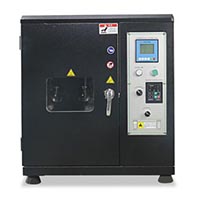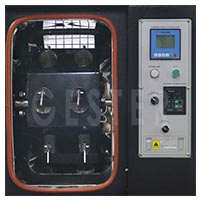Demystifying the Working Principle of an Infrared Laboratory Dyeing Machine
Table of Contents:
Introduction
 The Infrared Laboratory Dyeing Machine is a versatile and advanced apparatus that combines the benefits of traditional glycerol dyeing machines with infrared technology. Specifically designed for the dyeing industry, chemical sector, and raw material testing, this oil bath type dyeing lab equipment enables precise coloration and colorfastness testing of various materials such as knitted fabrics, woven fabrics, yarns, cotton, loose fibers, and zippers. In this article, we will explore the working principle of this laboratory dyeing machine and highlight its notable features.
The Infrared Laboratory Dyeing Machine is a versatile and advanced apparatus that combines the benefits of traditional glycerol dyeing machines with infrared technology. Specifically designed for the dyeing industry, chemical sector, and raw material testing, this oil bath type dyeing lab equipment enables precise coloration and colorfastness testing of various materials such as knitted fabrics, woven fabrics, yarns, cotton, loose fibers, and zippers. In this article, we will explore the working principle of this laboratory dyeing machine and highlight its notable features.
Explore laboratory dyeing machine
1. Versatility and Ease of Operation
One of the key advantages of the Infrared Laboratory Dyeing Machine is its user-friendly operation. The dye pot can be individually turned and removed, saving valuable waiting time during the dyeing process. This feature facilitates efficient sample handling and streamlines the overall operation.
2. Extensive Testing Capabilities
The lab dyeing machine enables comprehensive testing of various dyes and chemicals, including dispersing, leveling, and liquor ratio exhausting. Researchers and manufacturers can conduct precise experiments and evaluate different dyeing parameters to achieve desired results. Additionally, the machine offers a special recommendation for "STEP DYEING," allowing users to select the most suitable dyestuffs and combinations for optimal dyeing curves, thus maximizing efficiency and quality.
3. Customizable Dye Pot Options
To accommodate different sample weights and sizes, the Infrared Laboratory Dyeing Machine offers a range of dye pot sizes. This flexibility ensures that the machine can handle various weights of samples, including yarns and fabrics, while maintaining excellent leveling results without crease marks.
4. Low Liquor Ratio Dyeing and Sample Weight
The textile laboratory dyeing machine is designed for low liquor ratio dyeing, making it suitable for efficient and resource-conscious processes. It can handle sample weights ranging from 4g to 20g, allowing for precise testing and optimization of dyeing conditions.
5. User-Friendly Design and Maintenance
The Infrared Laboratory Dyeing Machine features a user-centric design, prioritizing ease of use, durability, and simple maintenance. Its accessible controls ensure that operators can navigate the machine effortlessly. The equipment is built to withstand regular usage and requires minimal maintenance, contributing to its long-term usability.
6. Safety, Efficiency, and Environmental Considerations
The Infrared dyeing lab equipment adheres to the highest safety standards. Its high efficiency and energy-saving capabilities make it an ideal choice for small sample dyeing machines, optimizing resource consumption while delivering reliable and accurate results. Furthermore, its environmentally friendly operation aligns with sustainability goals in the dyeing industry.

Conclusion
 The Infrared Laboratory Dyeing Machine colorfastness testing process by incorporating the advantages of traditional glycerol dyeing machines and infrared technology. Its versatility, ease of operation, extensive testing capabilities, customizable dye pot options, low liquor ratio dyeing capability, user-friendly design, and focus on safety and efficiency make it a valuable asset in the dyeing industry. By understanding the working principle and features of this innovative laboratory dyeing machine, researchers and manufacturers can achieve consistent and high-quality results while reducing resource consumption and environmental impact.
The Infrared Laboratory Dyeing Machine colorfastness testing process by incorporating the advantages of traditional glycerol dyeing machines and infrared technology. Its versatility, ease of operation, extensive testing capabilities, customizable dye pot options, low liquor ratio dyeing capability, user-friendly design, and focus on safety and efficiency make it a valuable asset in the dyeing industry. By understanding the working principle and features of this innovative laboratory dyeing machine, researchers and manufacturers can achieve consistent and high-quality results while reducing resource consumption and environmental impact.